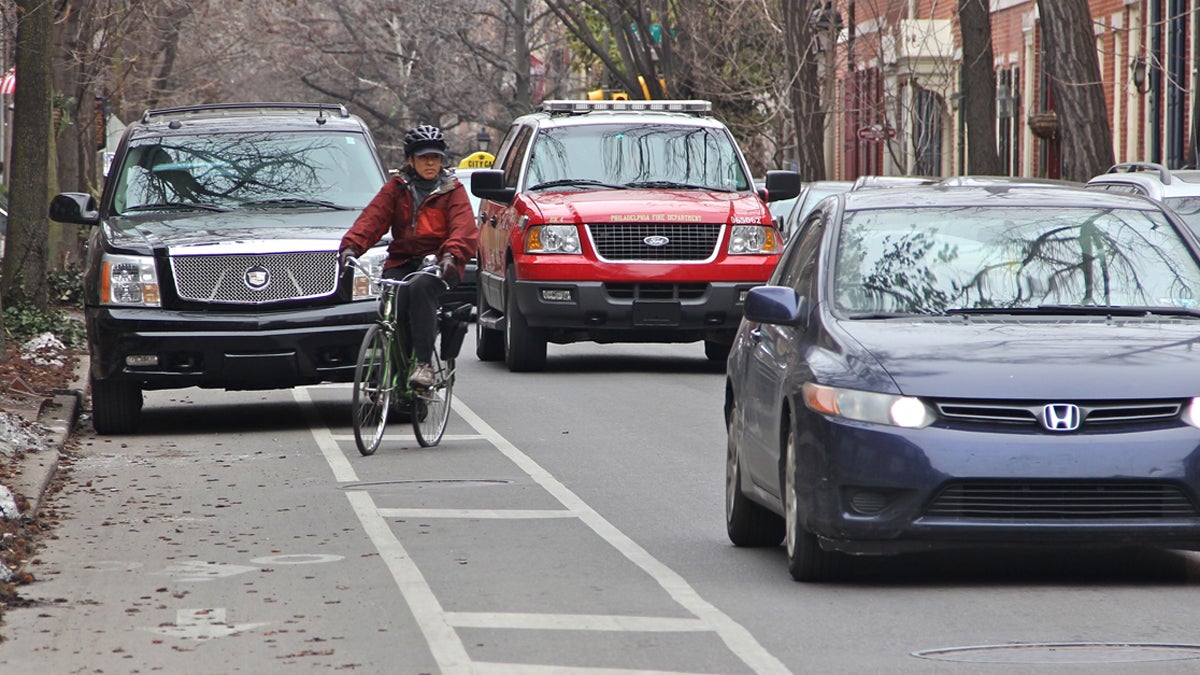Ideas Worth Stealing: Lowering speed limits in urban areas

(Emma Lee/WHYY)
One way to get people walking and biking in cities is to slow down car traffic.
Ideas Worth Stealing: Every week, Keystone Crossroads will look to cities across the world for lessons in urbanism and municipal governance that could benefit Pennsylvania. No city does it all right, and we hope these examples from metropolises near and far inspire and encourage cities here to think outside the box.
Last year, New York City lowered its speed limit to 25 miles per hour on 90 percent of streets. In London, a 20 mph blanket speed limit applies. Paris is looking to impose similar restrictions. And in the U.S., Seattle is testing out 20 mph speed limits in residential zones.
The point, in each case, is to improve safety. With re-urbanization a national trend in the U.S., urban leaders are working to make cities more walkable and bikeable.
During a recent visit to Pittsburgh, urbanist Gil Penalosa said there are only two things that will get a substantial number of people out of their cars and on to bikes: a bike grid, and lower speed limits.
“If we want neighborhoods where people walk or bike we need to lower the speed,” he said. “We do it in front of the schools. Why? Because it works. But do we want children to be safe only in front of the school? Or do we want it to be safe everywhere?”
New York’s parkways, expressways, and arterial roads will allow faster traffic, but most streets are slowing down as part of Mayor Bill De Blasio’s Vision Zero plan to eliminate traffic deaths and injuries in the city. Last year, 269 people died in traffic accidents in NYC, the majority pedestrians.
Studies show that collisions between cars and pedestrians at lower speeds are significantly less likely to result in injury and death. According to the AAA Foundation for Traffic Safety the risk of both severe injury and death for pedestrians after a collision with a vehicle shoots up significantly as speeds rise:
Average risk of severe injury
Average risk of death
Pittsburgh saw nearly 2,100 collisions involving pedestrians, between 2006 and 2013. In Philadelphia, there were 8,690 crashes involving 9,051 pedestrians between 2008 and 2012.
But if those cities — or any Pennsylvania municipality — want to change the state-mandated speed limit on a road, it must do a traffic study, pass an ordinance, and then post speed limit signs.
Pennsylvania law typically assigns speed limits of 25 miles per hour to residential areas and 35 miles per hour in urban areas.
Under these rules, if a person is commuting from his or her residential neighborhood to work in a non-residential part of the city, the chance of grave injury and death in the case of a collision more than doubles along the way. A lower, blanket speed limit would make the commute safer for everyone – if drivers actually follow the rules.
WHYY is your source for fact-based, in-depth journalism and information. As a nonprofit organization, we rely on financial support from readers like you. Please give today.


